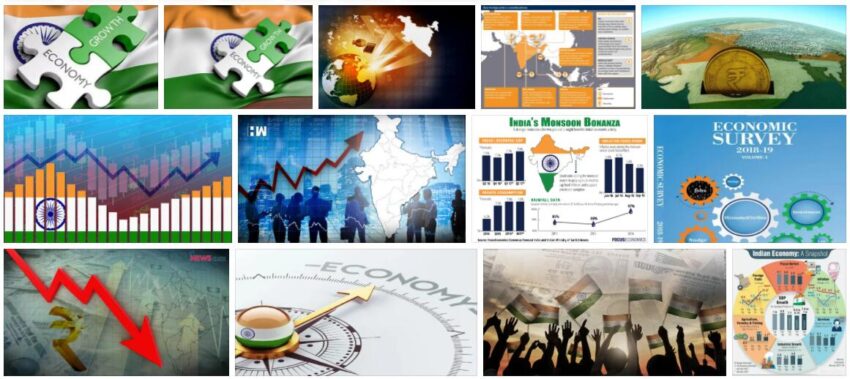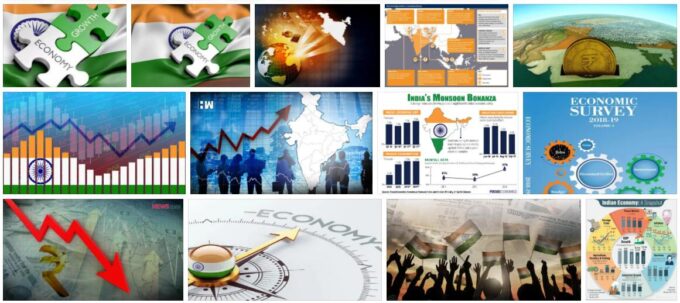After India gained independence in 1947, all major political forces agreed that economic independence and rapid industrialization, as well as social justice, should be the primary goals of economic policy. Western-style capitalism was ruled out. India was looking for an economic system that was located as the so-called third path between capitalism and socialism of the Eastern type. A so-called “socialist pattern of society” was pursued as a goal.
Given the weakness of private industry, the state has been given a full, active role in economic life. Until the early 1990’s, the Indian state appeared on a massive scale as a planner, investor, licensor and legislator – albeit with only moderate success. The mixed economy with a state and private sector, regulated by five-year plans, was subject to internal growth barriers. The widespread poverty of the population in particular could not be overcome; in absolute terms she had even gained weight. From 1991 Triggered by a severe financial crisis, the Congress government at that time finally turned away from the old economic policy and introduced measures that should help an economic order based on free market economy and private entrepreneurship to break through and thus mobilize new forces for sustained high economic growth . The quantitative successes soon came. Today India is one of the leading countries in the world in areas such as information technology or biotechnology. However, there are still many hurdles to overcome to actually help a fundamental reorganization of the Indian economy towards a social market economy to break through. However, some critics complain that the goal of social justice is being pushed more and more into the background, and that the social disparities in the country are increasing more and more.
With the economic reforms introduced in the early 1990’s, the country’s economic rise began. The heavily indebted country, whose economic actors suffered from state dirigism and excessive bureaucracy – phenomena that have nevertheless not completely disappeared to this day – gradually freed itself from the shackles that Nehru and later Indira Gandhi had placed on it. Even if all investment barriers have not yet been lifted, India is one of the leading countries in the world today in industries such as information technology or research, especially biotechnology.
The new government under Narendra Modi, which has been in office since 2014, not only wants to continue the market economy course, but also intensify it by removing bureaucratic obstacles and reducing protectionism. Foreign investors should become more active. The Make in India Initiative was also received with great approval. With the Make in India Mittelstand program launched in September 2015, the Indian Embassy in Berlin, with the support of important Indian ministries, is promoting German medium-sized companies and promoting their entry into the Indian market. India, for example, was the partner country at the Hanover Fair in 2015. In the course of the 4th Indo-German government consultations in Germany in May 2017 and the 5th Indo-German government consultations in New Delhi in November 2019, Prime Minister Modi used his visit to Germany to further promote his initiative.
Economic development
From independence in 1947 to the liberalization of the economy in 1991, India recorded stable economic growth averaging 3.5 percent per year, a figure that analysts termed the ” hindu rate of growth “. After that, the economy grew rapidly, averaging around 7 percent per year. By 2010 economic growth had even reached the 10% mark, but then returned to the average rate. The Indian economy has been experiencing weak growth since last year (2019) and only recorded growth of 4.8 percent in the first half of the Indian financial year 2019/20 (April – September 2019). The current corona crisis will lead to a further sharp decline.
Regional differences in economic development are very pronounced. These have intensified since the economy was liberalized in 1991.
According to Softwareleverage.org, India suffered comparatively less from the consequences of the global economic and financial crisis, as the country is less dependent on exports and the banking system is less closely interwoven with the international financial market. Shortly before Narendra Modi took office in 2014, the economic climate brightened overall, also due to the falling oil price.
The new Goods and Service Tax was introduced nationwide at the beginning of 2017 with the aim of creating a uniform market and replacing a large part of the local taxes. However, experts criticize the unnecessarily complicated new system with six different tax rates for different goods and the rather poor implementation on the part of the state. To make things even more complicated, however, individual states have now decided to levy extra taxes in addition to the GST.
The abolition of all 500 and 1000 rupee bills (“demonetization”) on November 8, 2016 – which accounted for around 86% of the cash in circulation – has in all probability had a negative impact on economic growth. The action was justified by devaluing the abundant black money and pushing back the shadow economy. In fact, economic growth declined to 6.1 percent in early 2017 and has remained more or less at this level since then, albeit with a downward trend.

